 |
UK Broadcast Transmission |
|
|||||||||||
THE TRANSMISSION GALLERY
PONTOP PIKE
| Photos by TCPD | Page last updated: 2025-03-26 |
| Pontop Pike was scheduled as one of several medium powered BBC TV transmitters filling in the larger coverage gaps between the five high powered transmitting stations at Alexandra Palace, Sutton Coldfield, Holme Moss, Kirk o’Shotts and Wenvoe. The other medium powered stations were to be at Rowridge, North Hessary Tor, Tacolneston, Sandale, Divis and Meldrum. Although the five high powered BBC TV transmitting stations were all in service by August 1952, none of the medium powered had been constructed when it was announced that the Coronation of HM Queen Elizabeth in June 1953 would be televised. This further stimulated the demand for television and the BBC decided that temporary stations were to be installed to cover the Newcastle, Brighton and Belfast areas. As no commercial transmitting equipment was available, BBC engineers modified a number 250 W, RCA short wave transmitters, which had been purchased ex-war surplus. These transmitters were installed in redundant BBC TV Outside Broadcast vehicles. Pontop Pike and Glencairn (Belfast), were the first to use this temporary equipment. Both entering service on 1-May-1953. At Pontop Pike the site and electricity supply were available in preparation for the eventual permanent station and conveniently, the programme input signals were available from the adjacent GPO SHF link site which already existed relaying the BBC TV signals from Manchester to Kirk o’Shotts in Central Scotland. Transmissions on VHF Ch5 were from a three tier, Marconi super-turnstile antenna mounted on top of a 250ft tower. |

| The 1953 temporary 250ft tower at Pontop Pike. The BBC TV service transferred to the permanent transmitter and mast on 15-Nov-1955. BBC National FM radio entered service on 20-Dec-1955. |

| Pontop Pike was originally built with Band 1 at the top. Years later, in order to make way for the UHF cylinder in the 1960s, a new Band I antenna was built in the unused aperture below. A link at the bottom of this page leads to an article on the BBCeng.info website about the building of the BBC FM network, including a photo of work at Pontop Pike in the 1950s. There are also other links to BBC papers on the subject of the planning of and installations at Pontop Pike. |
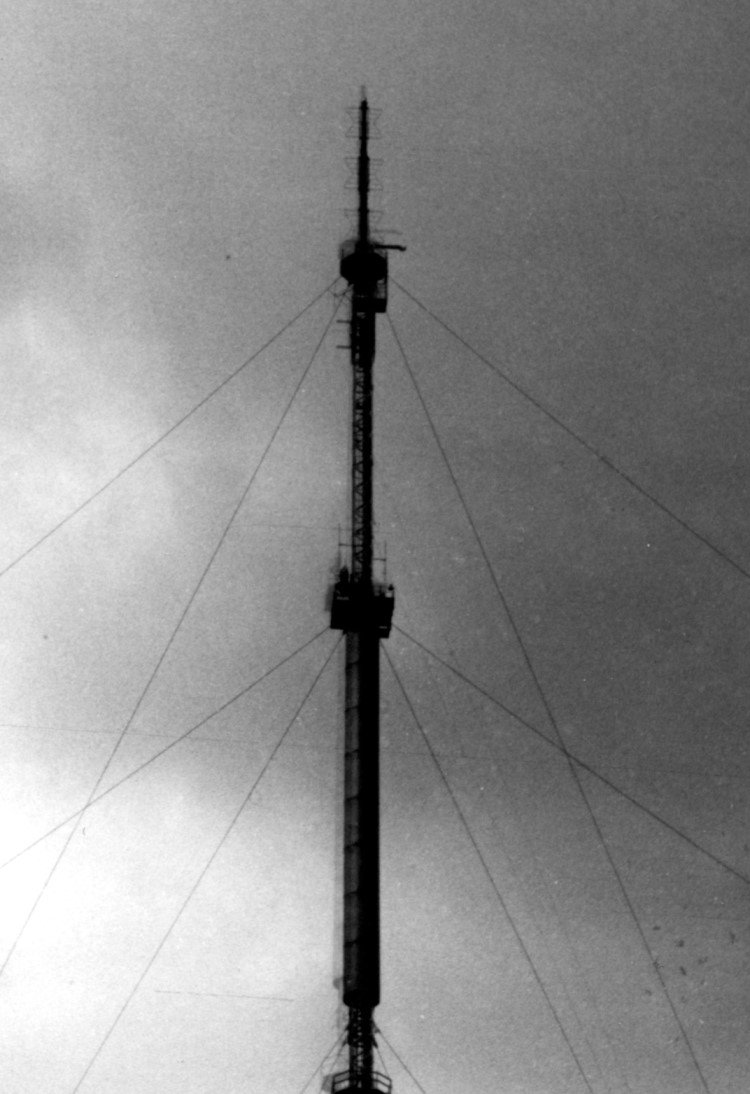
| Above: the old Band I ch 5 antenna looks like 3 tiers of Superturnstiles (Also sometimes called "Batwing" elements) This original arrangement on the permanent mast at Pontop Pike makes it almost identical to Meldrum at the time. Meldrum wasn't used for UHF so the superturnstile aerial there remained in place. It's interesting to note the large empty aperture between the Band I and Band II systems. Was the mast designed at a time when the BBC thought that they might be authorised to operate a second TV channel in Band III? (BBC TV went into service on 1st May 1953, from the temporary 250 ft mast, two years before the start of ITV). BBC TV transferred to the main mast on 15th November 1955, with FM radio services starting 5 weeks later on 20th December 1955. |
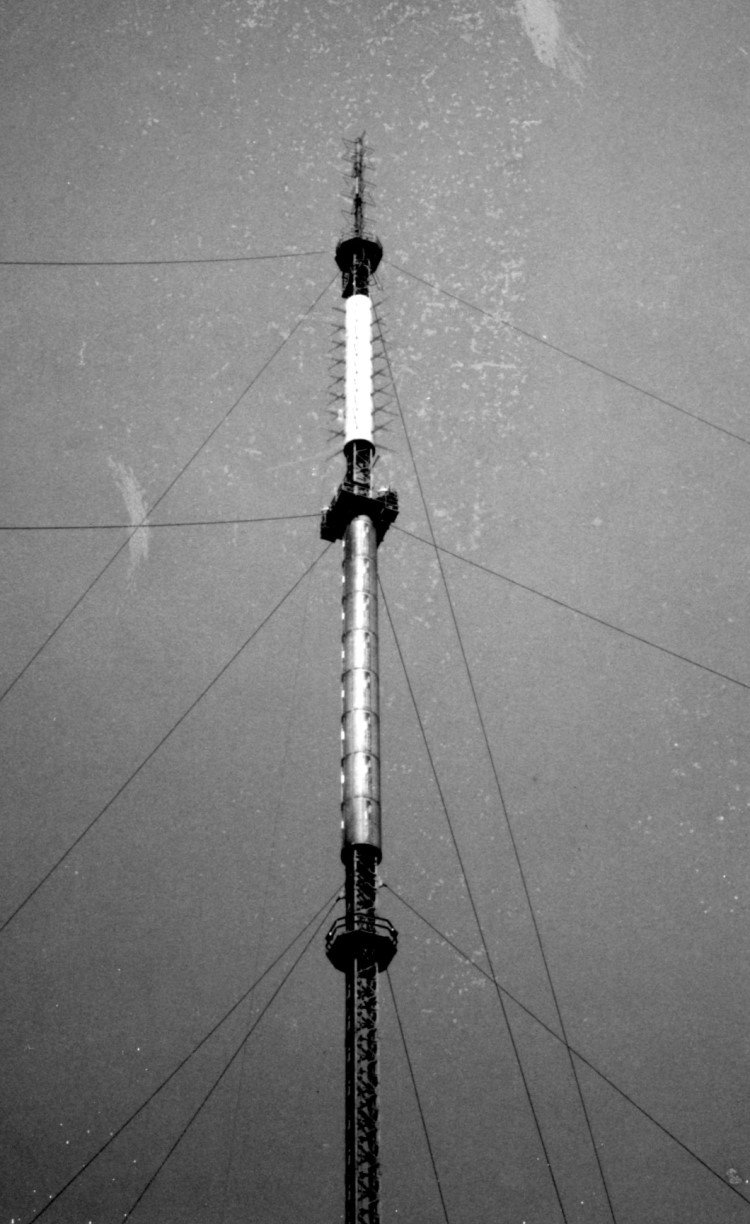
| We move on a few years and see the new Band I antenna, consisting of 8 tiers of 6 elements. The original superturnstile is still in place. |
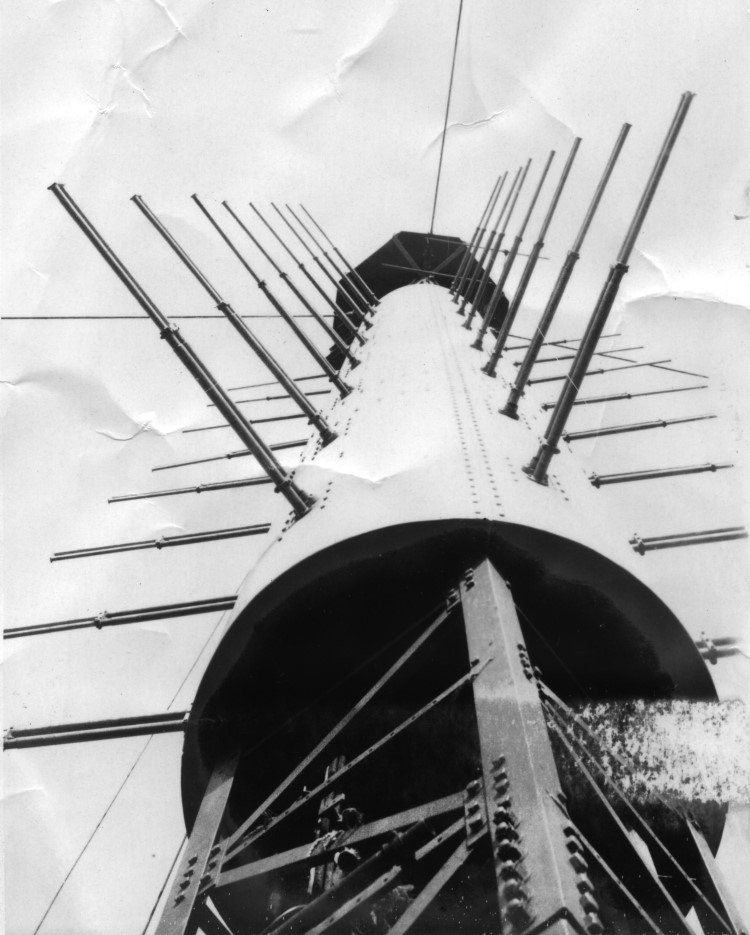
| TCPD writes: I was surprised to see how much detail came out on the scan of this crumpled, faded, old Polaroid. (This Band I channel 5 aerial is very similar to the one used at Peterborough). |
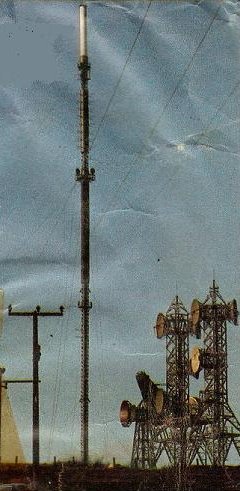
| ...and this is what it looked like in about 1971 with the new UHF cylinder. (Photo taken from a weekend magazine article, and supplied by Martin Watkins). BBC 2 went into service on 5th November 1966, BBC 1 on 13th July 1970, ITV on 17th July 1970, with Channel 4 available from the launch on 2nd November 1982. Radio Durham entered service on 31st July 1968, on 96.8 MHz. Closed 25th August 1972. Radio Newcastle launched on 2nd January 1971, on 95.4 MHz. |
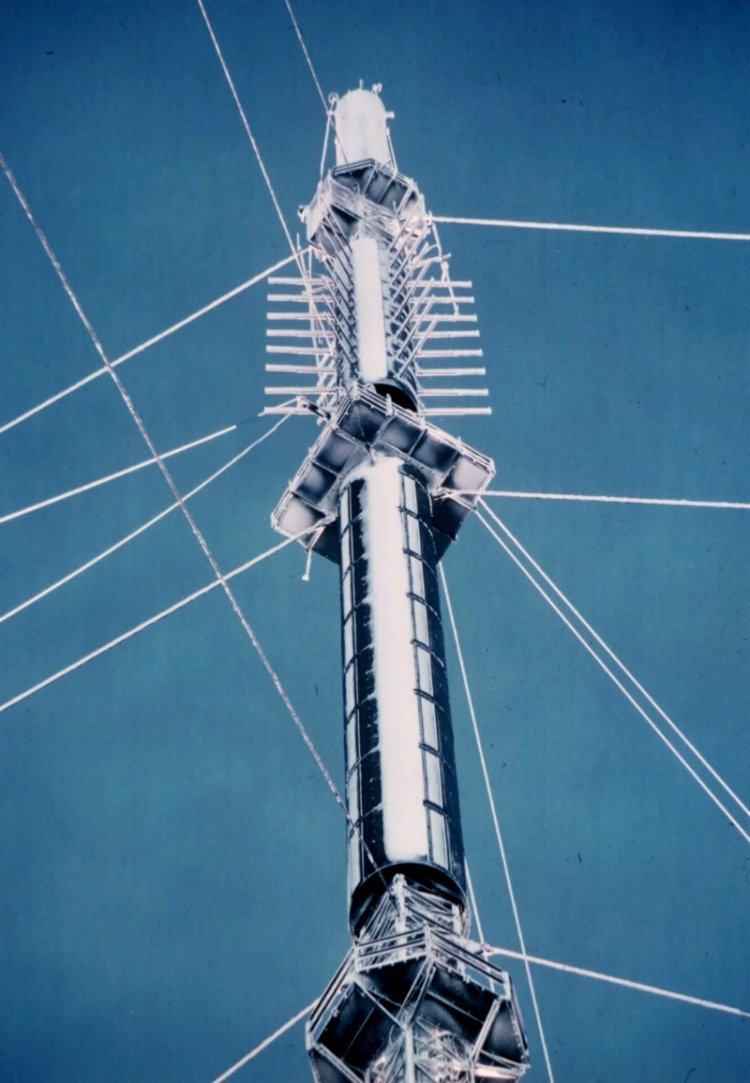
| Above - this photo (again by TCPD) was taken in or around 1980 and shows the mast with the UHF aerials at the top, the Band I (channel 5) aerials and the VHF radio cylinder/slot aerials below them. |

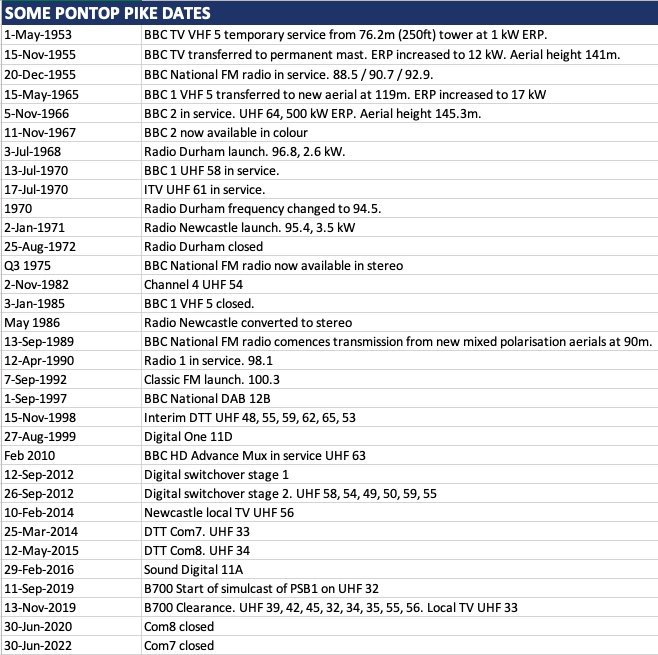
The Background to and Engineering of VHF/FM Radio Broadcasting in the UK (Geoff Platts)
Site tests at Pontop Pike
The FM service area of Pontop Pike
The Modifications made to the Band I aerial in preparation for UHF
The Band I service area of Pontop Pike
THe UHF aerial at Pontop Pike
The service area of the temporary television transmitters at Truleigh Hill, Pontop Pike and Glencairn (BBC RD 1954)
| |
Back to TX Gallery index | TX main index
|